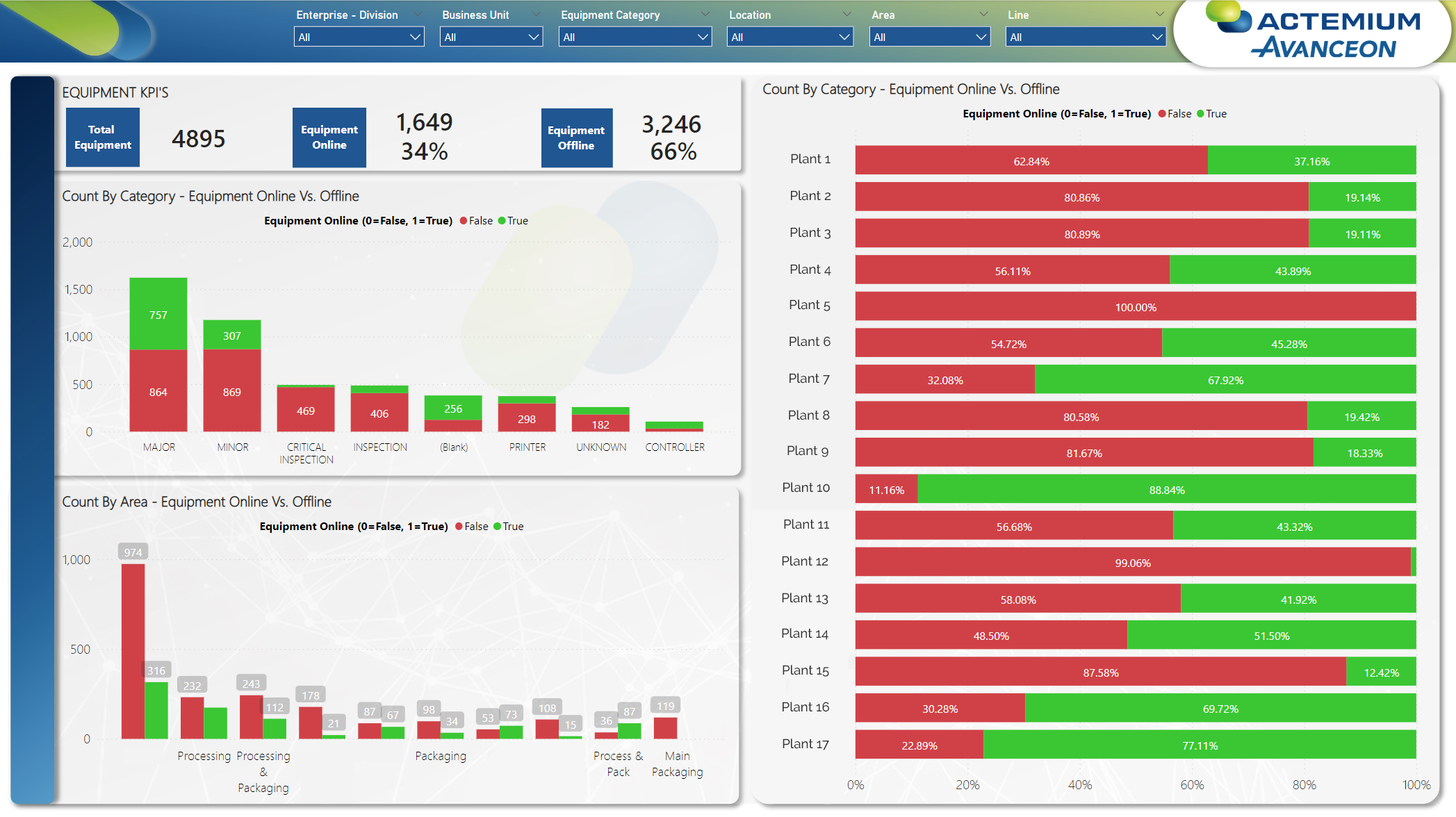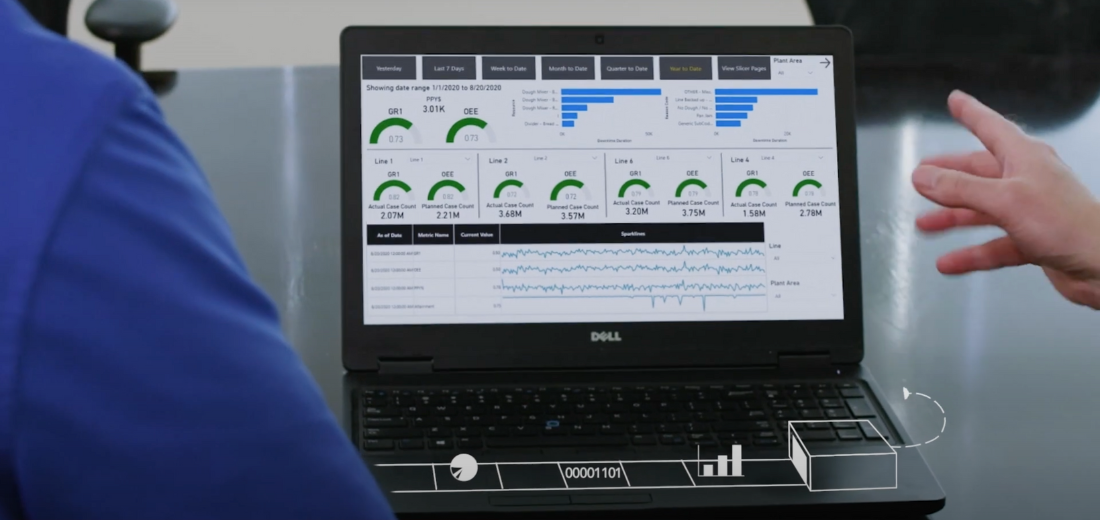Breaking the Mold: Our Approach to Digital Transformation
From Top to Bottom
Digital Transformation (DX) can be a confusing topic for many companies. Some may assume it involves large-scale overhauls, when in reality it can be as simple as a minor change to the way you present the information, that is already displayed on an interface. In this blog, we share our approach to DX, which encompasses strategy to cover all aspects of the transformation process that can be applied regardless of the scale of your initiative.
To kick off a DX program, the first step is to identify all essential stakeholders and encourage effective communication among them, from the plant floor to the C-suite. These early discussions lay the groundwork for the program, hence it’s vital to establish an overall vision and then clear goals for each milestone. Likewise, it’s important to anticipate potential supply chain issues that could disrupt the program’s schedule. Identifying these issues ahead of time will help eliminate any unexpected hardware surprises down the road and ensure that the program stays on track by allowing increased time for events such as ordering more or alternate equipment.
Once the initial phases of the DX program have been planned, the highest Return on Investment (ROI) section of the program will be identified. It’s crucial to ensure that this section is clearly defined, leaving no room for ambiguity. This is important because program stakeholders will frequently refer back to the initial requirements when the plant has additional requests or unique needs.
To ensure that all stakeholders are aligned, we developed a questionnaire that allows plant leadership to participate and articulate their expectations for the success of the DX program. This process helps to establish a clear understanding of the desired outcome of the program and begin fostering engagements. By working closely with the plant leadership team, we can identify the critical areas of the plant and focus our efforts accordingly. It’s essential to create a detailed Scope of Work (SOW) document for each plant involved, taking into consideration any unique equipment or process factors. Once everything has been documented, we schedule a review session to agree on the scope of goals. This review enables us to develop a budget and conduct a final review of the plant(s).
The Breakdown
Let’s rewind and talk more in detail about how to reach the final review:
Site investigation
• To investigate the site, we dispatch one or several of our experienced DX engineers to the customer’s facility to conduct a site investigation. Our team members are knowledgeable about the manufacturing and industrial environment, so they can assist in determining the critical path that would best benefit the customer’s new DX program. Based on the investigation, we develop a precise Scope of Work (SOW) document that is tailored to the facility and aligns with the overall requirements of the DX program. This approach ensures that the customer fully understands the deliverables and minimizes any misunderstandings.
• The SOW defines where the program is heading and builds the justification behind it. Before the documentation is drawn up, we will have a holistic understanding of the current state of the plant(s).
• In addition to preparing the SOW, we enter equipment documentation into our DX inventory management system. The aim is to maintain a standardized approach for every manufacturing process or facility and ensure the correct level of enablement technology at each facility. The DX inventory system provides a clear picture of the DX program’s progression and furnishes detailed equipment information for future project work.
Data Science
• We clean the data streams, create interactive dashboards, and take a “snapshot” of how each section of the facility is “connected.”
• It’s inevitable that plants refer to equipment differently and there will be variations in the dataset that our team aggregates into a homogeneous asset library focused on an assets ability to propagate a Digital Twin. The data is structured in a way that is easily reportable to provide the basis to define KPI’s for the Digital Transformation program and later will help in any additional ROI justification.
• As a final step of our data science leverage phase of DX we create interactive dashboards based off this information geared towards strategically defining the current state of the enterprise.
• In addition to the enterprise dashboards, the program provides each plant with a scorecard. The result is an easily digestible snapshot of how “Connected” their facility is.

Plant Resource Evaluation
• When working with a plant on a Digital Transformation program, it’s important to assess their internal resource availability and capability to execute. This involves evaluating the plant’s existing operational leadership, engineering and IT staff, as well as their workload and competing priorities. By scoring the plant’s resource availability, we can determine how much additional support they may need to successfully implement the program as well as how much effort will be required for internal adoption of the DX system.
• If we find that the plant is lacking in certain resources, such as engineering or IT staff, we then work to determine the best way to backfill those roles. This may involve bringing in external consultants or contractors to help support the plant’s team. Moreover, we consider the plant’s readiness and willingness to receive, use and maintain new technology. This involves assessing their existing infrastructure and systems, as well as the level of training and support needed to successfully integrate the new technology into their operations.
• If we find that plant resources are already stretched thin with other projects, we may need to provide further support to help lessen the burden. This may involve providing additional staff or resources to help with adoption, change management, implementation or restructuring the program timeline to better align with the plant’s existing workload. Ultimately, the goal is to ensure that the plant has the right technical and operational resources and support needed to successfully implement the Digital Transformation program and achieve its goals.
Connected Factory Enablement
• When implementing a DX program, it is important to have a consistent and scalable approach to data aggregation. This means that all data from different plants must be collected and stored in a unified format that can be easily accessed and analyzed. To achieve this, our team evaluates the various equipment, protocols, and data sources present in the plant for their viability to conform to the data model.
• Once we have a thorough understanding of these factors, we can agree upon a data aggregation approach that will work across the entire network of plants in the DX program. This approach must be designed to be scalable and futureproof, meaning that it can accommodate any changes or additions to the plant’s equipment and processes in the future.
• The advantage of this approach is that it significantly reduces integration costs compared to evaluating each plant individually. By implementing a standardized approach, we can ensure that the data collected is consistent and can be easily analyzed across all plants. This, in turn, enables us to identify trends and patterns that might not have been evident before, leading to better decision-making and improved operational efficiency.
Adoption: Training the Team
• Before the implementation, it is critical to understand the human aspects of the plant’s people. Typically, the plant has operated in a certain fashion for decades and the addition of DX creates a change to that model. DX Education programs, detailed scope reviews, functional training sessions and future state demos are key tools we leverage in order to soften the impact of the change and develop a fertile adoption environment for the new system.
• After implementing the DX program, one cannot simply walk away. Now is the time to ensure that all end users adopt the program. We provide standardized training resource materials to further secure a successful outcome. Key components of the education/training phase include videos, simulations, and single-point lessons at each stage of the plant operations, maintenance, and engineering levels. These courses are available 24×7, 365 days a year through a Learning Management System (LMS) for easy access and flexibility. Each lesson has competency testing embedded to allow for individualized traceability and accountability for the customer’s employees.
• Another important feature that we offer is deploying a specialized group of technical team members on-site to ensure the success of the program. During this time, our team walks the floor and engages with end users, gathering feedback on their user experience. This step allows us to stay on top of any arising issues and provides opportunities for continuous improvement and on the spot reinforcement training. Hence, in the early stages of adoption we dedicate a team for 24×7 support. We also provide on-the-job reinforcement training and have Subject Matter Expert (SME) specialists a phone call away.
Digital Transformation does not have to be intimidating but it does require some structure. Our goal is to be with the customer every step of the way, guaranteeing that they obtain the transformation they have been desiring, with the outcome that they expected from the start along with features and possibilities they had not originally considered. Furthermore, after the process is complete, we ensure they have the long term support they need to ensure the longevity and value of the system. We accomplish this by ensuring each member at every level of the plant understands how their job has been impacted and their information access expanded, thereby establishing an easier path to full adoption of the DX program.









